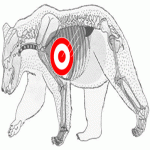This year i really want to try federal trophy copper meat eater for my bear hunt. I find the 180 gr (i know i should lower to 160 but its what i find and probably shoot to 30 to 50 yards only.)
My question : its this bullet will be too hard for a bear and only do a pass thrue like a FMJ ? Some one tell me that and now , im affraid to shoot with this ammo
Last year, ive shot federal trophy bounded 3006 180 gr with good result but i really want to give a try to copper
My question : its this bullet will be too hard for a bear and only do a pass thrue like a FMJ ? Some one tell me that and now , im affraid to shoot with this ammo
Last year, ive shot federal trophy bounded 3006 180 gr with good result but i really want to give a try to copper








































































